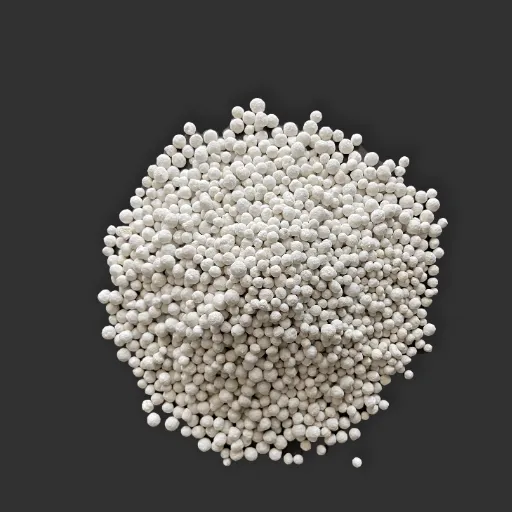Used in soils in both horticulture and agriculture, kieserite forms are the most suitable way of putting essential minerals that help to improve crop production. Through its exceptional magnesium supplies, this naturally occurring mineral is highly efficient, dissolved within water, and is great for every soil with a magnesium deficiency. The writing below examines the beneficial kieserite advantages on soil and essential nutrient uptake in horticulture, as well as its impact on crop production and development. You could be a professional or just have a kitchen garden; the exceptional agricultural benefits, as well as any benefits, are particularly important in soil enrichment and growing emphasis. Explore and uncover all the benefits required and how, through the most effective agriculture, you could practice and you could achieve even better efficiency with your efforts.
Understanding Kieserite
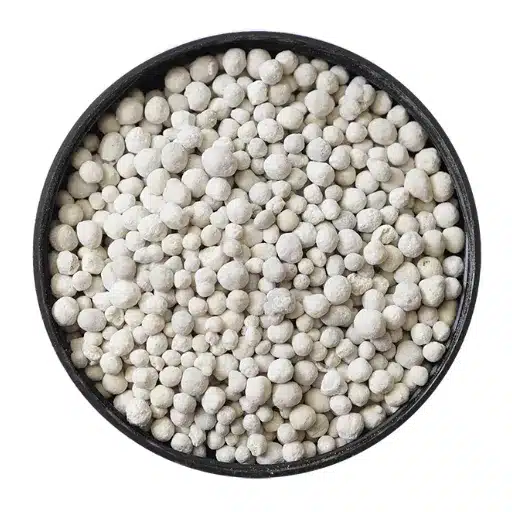
Definition
What is Kieserite?
Kieserite naturally forms when magnesium sulfate (MgSO₄·H₂O) reacts to evaporate ancient sea waters. It is located in sedimentary soils and boasts excellent water solubility. Magnesium and sulfide are two of the most important nutrients essential for plant development, and kieserite plays a critical role in providing both of them.
Kieserite is especially rich in magnesium, which is one of nature’s key elements for the process of photosynthesis because it sits at the center of the chlorophyll molecule. With such important components in nitrogen, magnesium deficiency greatly hampers plant energy production hampers development.
Kieserite is especially soluble, allowing minerals to be directly absorbed by plant roots, hence ideal for direct application to soils, particularly acidic and neutral soils. It is commonly used in agriculture in the cultivation of cereals, oil crops, and vegetables, and crops such as kieserite significantly improve the yield and quality. Furthermore, kieserite’s is naturally occurring, which means it is fully supported by sustainable agriculture techniques; hence, the use of this mineral is an eco-friendly choice, especially in this time of modern agriculture.
Composition
Composition of Kieserite Fertilizer
Plants require magnesium (Mg) and sulfur (S) for proper growth, and these materials are supplied by kieserite, which basically incorporates magnesium sulfate monohydrate (MgSO₄·H₂O). In this case, the composition of magnesium is at around 16–18% and sulfur is between 22% and 24% by weight. While magnesium helps in chlorophyll synthesis, is important for enzymes, and is vital for later stages of protein formation in plants, similarly, sulfur is a key structural component in enzymes and helps in the secondary structure of proteins in plants.
Key Composition Facts:
- Magnesium Content: 16–18% by weight
- Sulfur Content: 22–24% by weight
- High Water Solubility: Enables rapid nutrient uptake
- Purity: Free from harmful impurities
One of its major advantages in the agricultural industry is that magnesium sulfate monohydrate is highly soluble in water, allowing plants to rapidly absorb all the nutrients they need. Its high solubility allows the magnesium sulfate monohydrate to rapidly deliver magnesium and sulfur nutrients so that root plants pick them up with ease. With its solubility, the magnesium sulfate monohydrate can be effectively applied in high-rainfall regions for the quick and reliable provision of plant nutrients, enhancing both the quality of crops and plants.
Kieserite is the preferred choice because of its purity. The fact that it is free from impurities, kieserite does not contain harmful impurities and is safe for use in farming, either organic or traditional agriculture. Kieserite is a more valid source for organic and traditional farming, and for regions with magnesium deficiency and crops grown in these areas with higher demands, such as potatoes, sugar beets, and all varieties of citrus fruits. With the assimilable form of crucial nutrition provided, kieserite magnifies the growth of sustainable agricultural productivity.
Comparison
Differences Between Kieserite and Other Fertilizers
Each fertilizer, such as kieserite, is different in terms of its magnesium and sulfur content, its solubility, and how to apply it. Also, each one has a preferred soil type to be applied to.
| Aspect | Kieserite | Calcined Magnesite | Dolomite |
|---|---|---|---|
| Composition | Mg, S | Mg | Mg, Ca |
| Dissolution | High | Low | Low |
| Application | Soil, Fast | Soil, Slow | Soil, Slow |
| Soil Suitability | Acidic, Neutral | Neutral, Alkaline | Neutral, Alkaline |
| Action Speed | Fast | Slow | Slow |
| Purpose | Mg Deficiency | Mg Deficiency | Mg, Ca Deficiency |
The Role of Magnesium in Agriculture
Importance
Importance of Magnesium for Plant Health
For plants, magnesium is an important nutrient, particularly because it is a significant part of the chlorophyll molecule. Because of this, it is a vital nutrient, as it enables plants to harness the energy of sunlight and facilitate their productivity. Moreover, magnesium is a crucial cofactor in plant metabolic processes that include the synthesis of proteins and nucleic acids as well.
Adequate magnesium is critical for agriculture because its scarcity leads to poor crop yield and, consequently, poor quality. Mild symptoms, such as the yellowing of the leaf’s vein during the moderate growth stage, chlorosis, are accompanied by more severe side effects, such as an unseasonal leaf fall. Deficiencies such as these are more abundant where the soil is acidic or sandy, as in these conditions, the substrate’s magnesium can be leached further.
The use of kieserite, which is characterized by rapidly noticeable improvements, and dolomite, which besides improvement noticeably improves the calcium status, can successfully correct magnesium deficiencies. The correct choice is determined by the pH of the soil, the specific crop needs, and the urgency of the magnesium shortages. For optimal results, farmers should use modern soil tests, which can pinpoint nutrient imbalances on the go, and strategies targeting the specific issues of soil deficiencies.
Process
Magnesium’s Impact on Photosynthesis
Magnesium is indispensable for the process of photosynthesis, and it stands as a key component of the chlorophyll molecule. It is highly essential to the process of plant food synthesis. The following are detailed impacts of magnesium on the process of photosynthesis:
1. Structural Component of Chlorophyll
As for the magnesium molecule, the chlorophyll molecule also needs it. Magnesium plays a key role in a lot of processes, whose chief among them is capturing sunlight. This is much-needed for the overall functioning of the chlorophyll.
2. Enzyme Activation
By enabling the transfer of phosphate groups from Calvin’s cycle of photosynthesis, the enzymes involved in the photosynthetic carbon reaction need to be activated by magnesium. Without these very enzymes, ATP synthesis, as well as carbohydrate production, wouldn’t be possible.
3. Energy Transfer in Photosynthesis
Magnesium is particularly important when it comes to the production as well as the stability of adenosine triphosphate (ATP), which is the energy currency for the cells. It facilitates those energy transfers in the light reactions of photosynthesis.
4. Regulation of CO2 Assimilation
Magnesium activation of ribulose-1,5-bisphosphate carboxylase/oxygenase, the enzyme that is responsible for CO2 fixation, the process during which magnesium molecules, apart from photosynthesis,s increase magnesium molecules as a result of magnesium’s stabilization of the structure of the chlorophyll membranes during the chloroplast, is carbon-depriving.
5. Enhancement of Chloroplast Functionality
Thanks to magnesium, the chloroplast can optimize the flow of electrons as well as the capture of light, making the job of the chloroplast much easier.
These five impacts underscore magnesium’s significant role in ensuring strong and productive photosynthesis, qualifying it as a vital nutrient for sustainable farming practices.
Crop Types
Responses to Magnesium in Different Crop Types
Magnesium impacts different plant species depending on the specific requirements and physiological traits of the plant. For example:
🌾
Major Crops
Magnesium is fully needed for chlorophyll synthesis in wheat, maize, and rice, so that chlorophyll synthesis is flourishing. In Major Crops, magnesium is mostly needed for uniform growth. The issuance of magnesium is mostly associated with acidic or nutrient-depleted soils, which affect the crops ‘ food.
🫘
Pulses
In the flowering phase, nitrogen fixation is highly dependent on magnesium since it supports the enzymes that interact with nitrogen-fixing bacteria. The absence of magnesium tends to block assimilation of nitrogen and thus would result to decreased protein macro content in peas, beans, and lentils.
🍅
Fruits & Vegetables
There is a high need for magnesium in the fruits of the fruiting plants like tomato and citrus fruits and the leaves of the leafy fruits like spinach and lettuce so the sugars are optimally made and there is optimal transfer of minerals to the developing tissues. Low levels of magnesium would often result in the yellowing of the leaves and the reducing the also to the fruit quality to the fruit size keeping.
🌻
Oil Seeds
For oilseeds like soybean and sunflower, magnesium is nutrient needed in significant quantites. It supports the synthesis of fatty acids and their oil production. This has the effect of improving the yield and oil content, which should be positively affected.
Dependable influence on the total yield and quality is reliable for crops from the magnesium studies. The magnesium that is being sprayed should be adjusted to species, soil types, and the environment, along with the foliar magnesium and the soil amendments. The details of the studies undertaken reveal that magnesium enhances the quality of all agricultural products of the plant.
Benefits of Using Kieserite Fertilizer
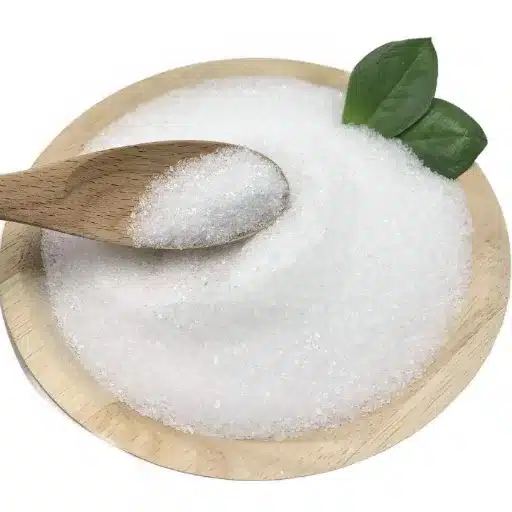
Yield
Improving Crop Yield and Quality
Kieserite is a vital naturally occurring magnesium sulfate mineral that benefits agriculture because of the presence of magnesium and sulfur, substances needed for plant growth and development. In plants, the magnesium found in chlorophyll molecules helps to carry out the photosynthesis process, which creates the food that plants need. Sulfur is another critical element, and it is needed in order to process certain amino acids, proteins, and enzymes, which, if they are not available, will cause stunted growth and a decrease in photosynthesis and output among crops. With Kieserite’s high water solubility, it provides a huge benefit to all crops and magnesium and sulfur.
Several examples of magnesium enrichment are oilseed oil, sugar beet sugar, and increased oil and structure in apples and tomatoes. In the case of sulfur, in root crops like garlic, onions, and beans, it helps in enhancing the odor of the root and the fragrance of the crops. Kieserite, in essence, has two of the benefits, that is, it helps in the uptake of the macronutrients and the normal body processes function, which greatly helps in realizing the crops’ potential in terms of quantity and quality.
Kieserite combined with precision farming applications, such as leaf tissue and soil analysis, allows for targeted fertilization solutions that meet crop-specific needs as well as local environmental conditions. From open field to greenhouses and controlled environments, kieserite is amenable to differing agronomic systems, providing the growers with a nutrient needed in crop development. Its impact is high in the hands of the grower when it is associated with the desired crop, as timely application of this mineral fertilizer ensures the minimization of fertilizers. Its utilization allows for the consideration of factors where the results are clearly visible in the form of high crop yield. Its quality for the crop can bring out the demand for the crop in a manner that the crops do not stand a chance of being rejected from the market.
Soil Health
Long-term Effects on Soil Fertility
Even magnesium-deficient soils can benefit a lot from kieserite in nutrient management, considering its far-reaching impact on soil fertility. Magnesium, being very important to the physiological well-being of plants as a critical part of chlorophyll and a cofactor in a number of enzymatic processes, needs to be available in the soil. The constant use of kieserite over time results in the replenishment of soil magnesium reserves in the soil, making it available, and helps to counterbalance the demanding needs of the production of crops in the discipline of agriculture.
Additionally, the sulfur in kieserite in the metabolism is fundamental for the synthesis of essential amino acids in the proteins of plants. Working alongside sulfur, kieserite tends to balance the soil pH in areas where it is highly acidic, as technology advances.
Experiments show that kieserite’s periodic use not only helps maintain yields across multiple seasons but also boosts the efficiency of the soil’s microbial activity. Increased activity and diversity of the microbes are linked to enhanced nutrient cycling, supporting the conversion of yet another obtuse form of nutrients, as the kieserite is limited in soil. Yields can be further improved, and immobile nutrients can be stopped with the help of the microbes, which are best suited for the breakdown of matter, which is a problem. Balancing the nutritional requirements and the high-yielding agricultural systems can be made possible with the help of the management provided by soil testing and the balance. It is very obvious and should be suggested that monitoring and testing are very critical in such cases for managing the soil in the right way to kieserite.
Application of Kieserite Fertilizer
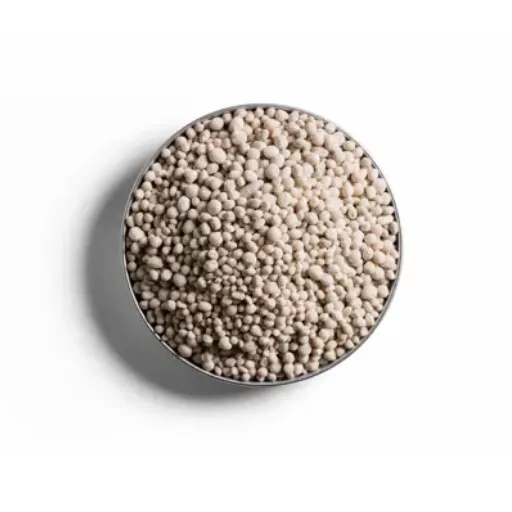
Dosage
Dosage Recommendations for Various Crops
Insufficiently labile magnesium in the soil requires the Magnesium and other soil support programs to address the crop-specific magnesium requirements of crops. In the case of wheat and maize, the Magnesium kieserite doses need to vary between 25 kg and 50 kg per hectare of land. Proper land fertility and its proper implementation can help in promoting proper kieserite efficacy.
Recommended Application Rates:
- Wheat & Maize: 25-50 kg per hectare
- Vegetables & Fruits: 50-100 kg per hectare
- Split Applications: During fruiting and cropping stages for enhanced nutrient availability
Growing areas with soil that is poor in magnesium need more magnesium, such as horticultural crops like vegetables and fruits. To these areas, kieserite can be applied at rates of 50 kg to 100 kg per hectare, with the application and crop specifications based on the soil health information. To increase magnesium and nutrient availability, especially when it is required during key stages of development, the fruiting and cropping stage, the rate needs to during split.
Comprehensive analysis of the soil for proper treatment is essential during Magnesium and other soil support programs and sensitive agricultural ventures that rely on magnesium, such as kieserite. Such enhanced management programs preserve essential nutrients and conserve the environment. In this case, an overarching management system should provide for the monitoring and adjustment of performance-related crop activities according to the conditions of the soil and the crop’s annual development plan.
Best Practices
Best Practices for Application
1. Soil Testing
Before magnesium application, it is crucial to manage the soil’s deficiency by determining the soil’s exact magnesium needs through testing. As per several studies, magnesium levels below 50 mg/kg show that there is not enough magnesium to support magnesium-deficient soils.
2. Growth Stage Application
Magnesium needs timely application. During early vegetative growth, it can enhance magnesium uptake, helping with plant growth.
3. Application Rates
Regional agronomic practices are available. As such, cereal crops in a hectare of land need 30-50 metric tonnes of magnesium. Both the crop’s soil conditions and magnesium demands per hectare must be taken into consideration.
4. Calibrated Equipment
Magnesium nutrients can do more harm than good. By using the recommended equipment, magnesia fertilizer can be evenly and harmlessly spread. Otherwise, it can cause excessive growth areas interlaced with micro-uneven growth on the surfaces it was applied to.
5. Compatible Nutrients
Magnesium nutrients are better absorbed when nutrients like potassium and nitrogen are spread together. Not just the nutrients, but their metabolic reactions are also better and ease the transportation of essential metabolic compounds. It is recommended to follow the 4:1 dose of magnesium to nitrogen.
Tips
Tips for Maximizing Efficiency and Effectiveness
- 1
Application of Magnesium Supplements
To ensure the availability of nutrients during the initial and pre-flowering, and even the flowering, as those are the high-demand phases. It makes nutrients available to prevent stunted crops.
- 2
Precision Fertilization
To solve issues related to magnesium, the nutrients could be made available in the required locations. For instance, magnesium. This is to eradicate wastage of nutrients and impact the plants positively.
- 3
Level Monitoring of Nutrients in Soil and Tissues
Regular Tests should be conducted to ensure that magnesium is provided in the required amounts. Scalable magnesium in all aspects is required, and better solutions, with appropriate magnesium and proper planning, are also accepted.
- 4
Implement High-Tech Tools
To meet nutrient challenges, we have been able to take the most advanced tools related to magnesium and its related aspects. These uniquely designed tools allow the utilization of magnesium in its proper concentrations.
- 5
Combine Weather and Climate Data
To enhance the management of nutrients such as magnesium, sensitive factors such as weather forecasts combined with climate should be observed. A perfect example is magnesium, which should not be applied before heavy rains so that it remains intact for the crops.
Adopting these approaches, which have been proven to work, will improve the management of magnesium nutrients, use, and efficiency of the magnesium, leading to the perfect watered crops, outcomes, and agricultural management.
Comparing Kieserite with Other Magnesium Sources
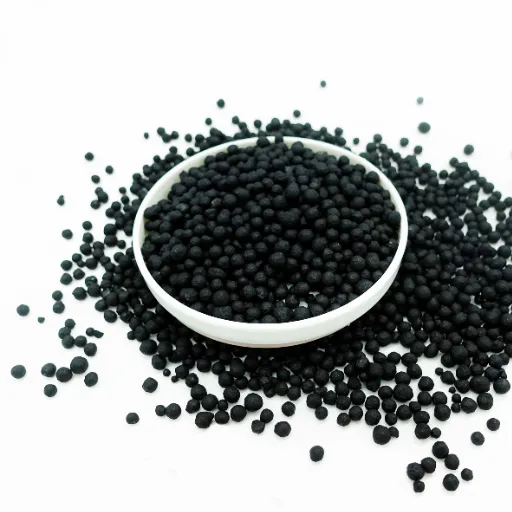
Comparison
Calcined Magnesite vs. Kieserite
Calcined magnesite and kieserite have distinctions in terms of formulation, solubility, application rate, compatibility with soil pH, and specific nutrient impactful area.
| Aspect | Kieserite | Calcined Magnesite |
|---|---|---|
| Composition | Mg, S | Mg |
| Dissolution | High | Low |
| Application | Soil, Fast | Soil, Slow |
| Soil Type | Acidic, Neutral | Neutral, Alkaline |
| Action Speed | Fast | Slow |
| Purpose | Mg, S Deficiency | Mg Deficiency |
Comparison
Dolomite vs. Kieserite: A Nutrient Comparison
Kieserite and Dolomite are grouped differently when it comes to nutrient availability, soil compatibility, speed of application, solubility, as well as the focus of the nutrient requirements.
| Aspect | Kieserite | Dolomite |
|---|---|---|
| Composition | Mg, S | Mg, Ca |
| Dissolution | High | Low |
| Application | Soil, Fast | Soil, Slow |
| Soil Type | Acidic, Neutral | Neutral, Alkaline |
| Action Speed | Fast | Slow |
| Purpose | Mg, S Deficiency | Mg, Ca Deficiency |
Selection Guide
Choosing the Right Fertilizer for Your Soil Type
When selecting appropriate fertilizers based on my land, and taking fertilizer recommendations for different soil types, I weigh Soil alkalinity, a few nutrient deficiencies, and the pace I would want the minerals to be available. Kieserite is the best choice if the soil is neutral or acidic and has to amend magnesium (Mg) deficiencies as well as sulfur (S) at a fast pace. Kieserite is the best option since it rapidly dissolves in soil moisture, so magnesium and sulfur are provided to the plants. It is particularly effective in acute scenarios with rapid uptake, such as kieserite.
🎯 Quick Selection Guide:
- Acidic/Neutral Soils + Quick Action Needed: Choose Kieserite
- Alkaline Soils + Calcium Deficiency: Choose Dolomite
- Long-term Nutrient Management: Consider Dolomite for slow-release benefits
On the contrary, for soils with calcium (Ca) and magnesium (Mg) shortages, dolomite is the best option. Dolomite is better slow operation due to its slower dissolution rate, allowing for a slow release of nutrients. In addition to essential magnesium, dolomite also supplies calcium to the soil, which is an essential part of plant structure and cellular function. Dolomite is applied to soils with the need for nutritional improvement with a designated amount; therefore, it has a slow release and is well planned.
Everything considered, I need to look at the key requirements for both the soil and the crops that I intend to cultivate because of the need to use fertilizers that are of great help to the unique needs of the plants being grown. Dolomite gives a much more comprehensive type of nutrient supply as it includes calcium, which is required as a fast-acting solution, especially in soils with higher pH. Kieserite, on the other hand, is significantly superior when one wants a balanced and more comprehensive nutrient supply to the plants. Clearly, the management of the crop’s nutrients and the health of the soil is enhanced.
Frequently Asked Questions (FAQ)
❓ What role does kieserite fertilizer have in agriculture?
Kieserite fertilizer’s central function is Magnesium Sulfate for Crop nutrition. It supports improvement in nutrient availability within the soil. It also enhances plant growth and vegetation. It is useful in correcting varying soil deficiencies in Magnesium fields.
❓ How does kieserite provide a solution to the magnesium problem for plants?
It is essential to note that kieserite is crucial in the maintenance of chlorophyll for plants and ultimately boosts photosynthesis by making soil-available magnesium nutrients. As a result, crops well endowed with magnesium are enabled to accelerate growth.
❓ Is kieserite suitable as a source of sulfur for plants?
In response to the query, kieserite does offer sulfur to plants, in addition to magnesium. The two combine to offer soil and, subsequently, plant health improvement. This mixture also supports better crop output through kieserite.
❓ What benefits does granular kieserite fertilizer offer?
Some of these benefits include ease of use, which greatly helps when it comes to the application of nutrients. In addition to being affordable, these products make use of slow-release technologies, which are well-suited for fragile ecosystems. Due to its high phosphorus and potassium, it can be used in a variety of applications.
❓ What does the application of kieserite do about magnesium deficiency in crops?
Applying kieserite for crops’ deficiencies in magnesium, signified by older leaves yellowing, enhances general crop health and yield. This is because kieserite provides plants with magnesium, which is readily absorbed for use.
❓ How does kieserite perform on soils with elevated magnesium levels?
Contrary to soils with lower magnesium levels, the application of kieserite has a two-fold advantage of improving crop health. This is worth noting because kieserite, in addition to magnesium recovery, is able to bring about significant nutrient improvement, making plant-support programmes more effective.
❓ For which crops is kieserite fertilizer most effective?
Crops like sugar beet, maize, and other forage crops, which need magnesium to grow and develop, are effective. This is particularly helpful for sugar beet, maize, and other similar crops where magnesium levels are considered important.
❓ What effects does the application of kieserite fertilizer have on agricultural sustainability?
It enhances the soil structure, improves soil health, improves nutrient availability, and also enhances the decomposition of organic matter. The use of kieserite improves soil health and contributes to the improvement of agricultural practices.
❓ What is the correct way to use kieserite as a fertilizer?
One can apply kieserite through broadcasting, incorporation, or by foliar application. The mode of use depends on soil and crop types. However, the key to its benefits is ensuring kieserite is properly and evenly distributed, whatever the method chosen.
❓ Does kieserite exhibit unique properties when it interacts with available nutrients in the soil?
Kieserite’s curiosity is piqued concerning its interaction with available soil nutrients; it is understandable to inquire as to if elements such as potassium and phosphorus, on their own, come as fertiliser. As the older leaves yellow with the magnesium, when these are combined with kieserite, its beneficial effects on the chlorophyll and therefore the plants become clearer.
References
-
IFAS Extension | Central District
Get an in-depth examination of choosing the correct magnesium sulfate sources and of magnesium supplementation for soil in southern Florida landscapes.
-
University of Kentucky Agricultural Publications
Gain an updated and in-depth guide to magnesium sulfate as a naturally occurring essential mineral in fertilizers.
-
Iowa State University – Integrated Crop Management
Analyze and explore how magnesium really impacts soil fertility in the innovation of agriculture.
-
Palm Beach County Extension
Unearth the real and rising need for magnesium in fertilizers and their application to kieserite for landscapes adorned with remarkable palms.
-
University of Florida IFAS Extension
Delves into the exceptional characteristics of magnesium sulfate, mainly as a source to release kieserite for field-grown palms.



